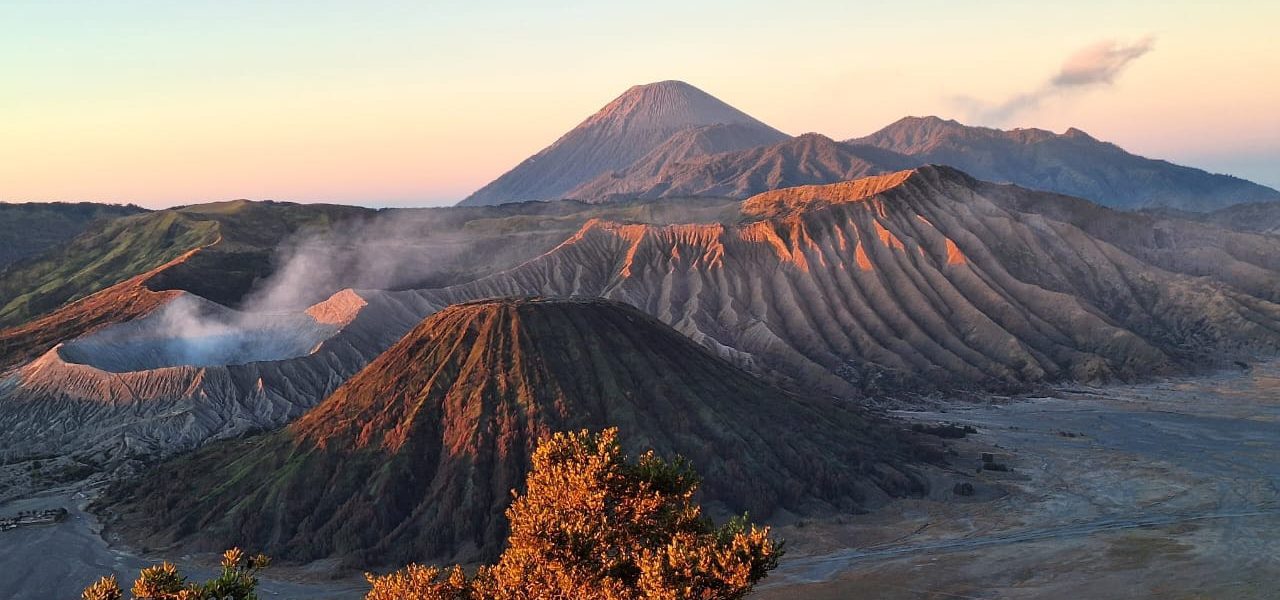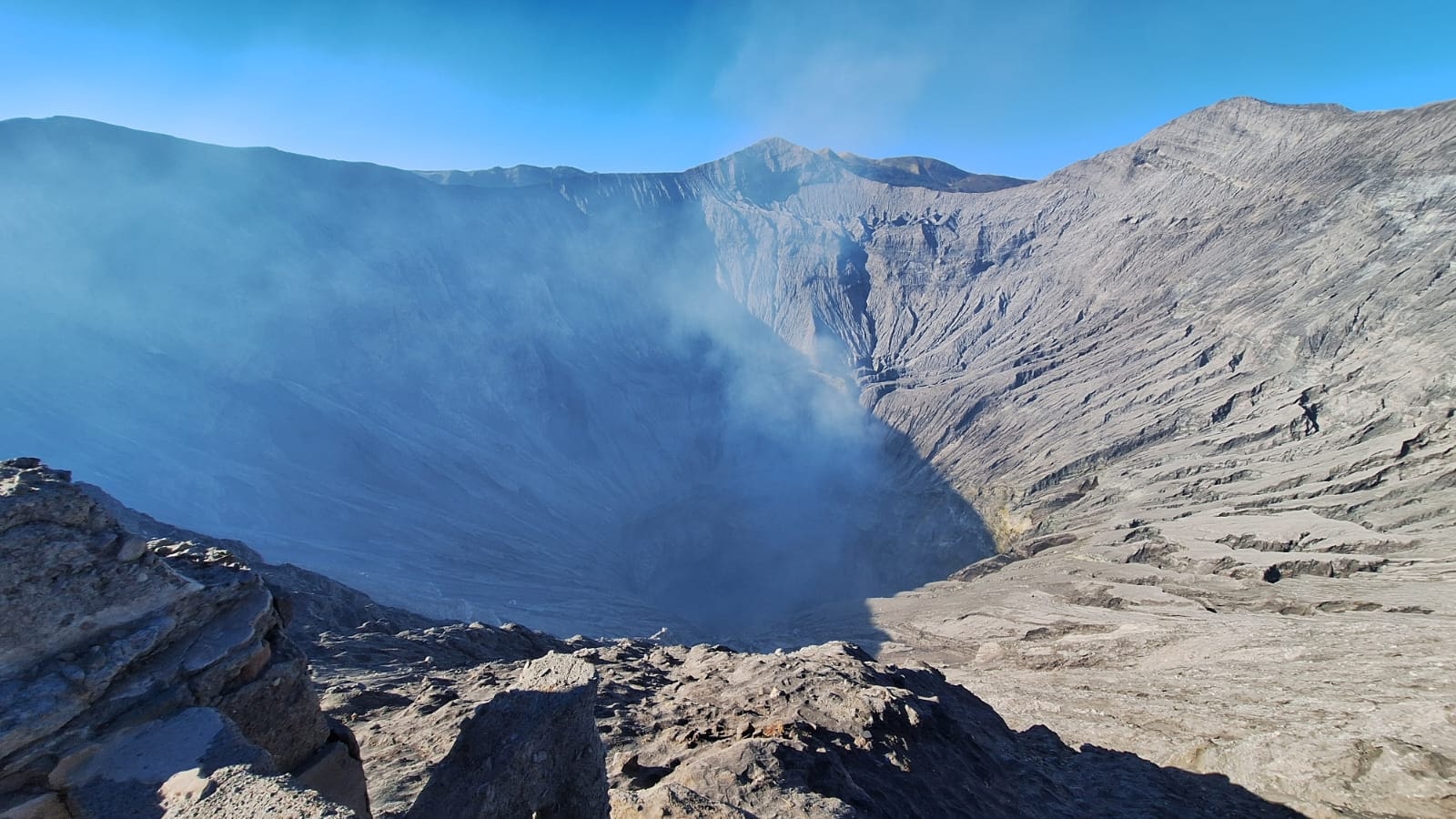If you’ve been searching for the Bromo Ijen Tour from Bali, you’re probably already daydreaming about that otherworldly sunrise at Mount Bromo and the surreal blue flames of Ijen. And honestly, I don’t blame you. The combo of those two volcanoes is hands-down one of the most jaw-dropping adventures in Indonesia. But let’s be real—figuring out how to actually do this trip from Bali isn’t always straightforward. Between ferry timings, overnight stays, and what kind of shoes won’t destroy your feet during the hikes, there’s a lot people don’t tell you. That’s what I want to lay out here—real talk, mixed with actual data, to help you plan a smooth (and unforgettable) trip.
Why People Book the Bromo Ijen Tour from Bali Instead of Going Solo
I get it, some of us like to wing it. I’ve been there—thinking I could piece together ferries, buses, and random guesthouses along the way. Spoiler alert: it works, but it’s exhausting. When you only have 3 or 4 days to spare, one small delay and your whole schedule collapses. That’s why so many travelers just go for the full package tour. You don’t have to think about ferry tickets from Gilimanuk to Banyuwangi, or wonder if the driver’s going to show up at 3 a.m.
The intent behind this keyword is mostly transactional—people typing “Bromo Ijen Tour from Bali” aren’t looking for volcano science projects. They’re ready to buy, book, or at least seriously plan. So if you’re reading this, chances are you’re not casually browsing; you want to know if the tours are worth it, how much they cost, and what the heck you’re getting yourself into.
The Classic Route from Bali to Bromo and Ijen
Here’s how most tours go:
- Pickup from your Bali hotel (often in places like Ubud, Canggu, or Kuta).
- Drive to Gilimanuk Harbor (roughly 4–5 hours, depending on Bali traffic… which can be brutal).
- Cross the Bali Strait via ferry to Banyuwangi, East Java.
- Stay overnight near Ijen or head directly toward Mount Bromo, depending on the itinerary.
- Hike Mount Ijen for the blue fire + sunrise over the turquoise crater lake.
- Continue to Bromo area, stay overnight.
- Next morning, wake up at an ungodly hour (like 2:30 a.m.) to catch Bromo sunrise at Penanjakan viewpoint.
- Explore the Sea of Sand and hike to the Bromo crater rim.
It sounds packed because it is. Most itineraries cram it into 3 days and 2 nights, but you’ll find some that stretch to 4 days, which honestly feels a bit saner.
According to Indonesia’s Ministry of Tourism, East Java receives over 3.5 million domestic and international visitors annually, and Mount Bromo remains one of the top 5 most visited natural attractions in the country. No surprise there—these places are bucket-list level.
How Long Does It Take from Bali?
I had no idea before my first trip, but getting from Bali to the Ijen basecamp already eats up nearly a day. The drive from Ubud to Gilimanuk is about 4.5–5 hours. The ferry ride is short, around 45 minutes, but the waiting time can add an hour or more if you’re unlucky. Then from Banyuwangi port to Ijen’s starting point, it’s another 1.5 hours drive. So if you leave Bali in the morning, you’re basically reaching Banyuwangi late afternoon or evening.
This is why most tours schedule Ijen first, because you’re already right there when you land in East Java. Then you continue westward toward Bromo afterward. If you reverse it, you’re just backtracking. Makes no sense unless you’ve got a weird custom plan.
What’s Actually Included in These Tours?
Here’s the tricky part: not all packages are created equal. The cheaper ones (I’ve seen offers starting around USD $120 per person for 3D2N) usually include:
- Hotel pickup in Bali
- Ferry tickets to Java
- Private/shared transport in Java
- Accommodation (basic, usually 2-star or guesthouse)
- Entrance fees for both Bromo and Ijen
- Local guide at Ijen (mandatory, because of safety at the crater)
- Breakfasts (sometimes dinners too)
The pricier ones, which can be $200–$300+ per person, throw in better hotels, a private driver all the way, and some creature comforts like AC vans instead of cramped minivans. From my experience, if you care about sleeping well, it’s worth spending a bit more. Trust me, hiking at 2 a.m. after a terrible night’s sleep in a noisy guesthouse isn’t fun.
Mount Ijen – The Blue Fire and Why It’s So Hyped
Everyone raves about Mount Ijen’s electric-blue flames, and yeah, they’re real. It’s caused by sulfuric gases igniting as they seep out of cracks near the crater. But here’s the part people don’t tell you: you need to start the hike at around midnight if you want to catch it. The hike itself is about 1.5 to 2 hours uphill, steep in some parts but manageable with breaks.
The thing is, the blue fire isn’t always visible. On my second trip, it was too foggy, and all we saw was a faint glow. Still worth it, but I wish I hadn’t hyped it up so much in my head. The real show, for me, was the sunrise over the turquoise lake. It’s acidic—like literally one of the largest acidic lakes in the world—so don’t even think about touching it. Just stand there and let your jaw drop.
Bring a proper gas mask. Not the flimsy paper kind. Most tours give you one, but they can be hit or miss. If sulfur fumes hit your throat, you’ll be coughing like crazy.
Mount Bromo – That Sunrise Everyone Talks About
After Ijen, you’ll drive for about 6–7 hours to the Bromo area. It’s long, but the landscapes are beautiful. When you arrive, expect to sleep a few hours before the 3 a.m. wake-up call.
The Bromo sunrise viewpoint (King Kong Hill or Penanjakan) gets crowded. We’re talking hundreds of people with cameras and tripods lined up shoulder-to-shoulder. My tip? Don’t stress about being in the “perfect” spot. The whole ridge has insane views of Mount Bromo, Mount Semeru puffing smoke in the background, and the whole Tengger caldera spread out like something from another planet.
After sunrise, you’ll ride a jeep down to the Sea of Sand. From there, it’s a short walk (or horse ride, if you’re feeling extra lazy) to the Bromo crater. The stairs to the rim can get clogged, but standing at the edge and hearing the volcano rumble—it’s a humbling moment.
Mount Bromo location:
Best Time to Do the Bromo Ijen Tour from Bali
Weather matters a lot. The dry season, April to October, is ideal because the skies are clearer. I once went in January and let’s just say—rain, mud, fog… the works. Couldn’t see anything at sunrise, which kind of defeats the purpose.
Another thing people forget: weekends and Indonesian holidays. If you go during those times, brace yourself for massive crowds. Locals love Bromo and Ijen just as much as international tourists, so the viewpoints get packed.
If you’re planning a trip, you might want to check out this Bali Tour Package for an easy and memorable getaway.
What to Pack (Stuff People Always Forget)
I’ll keep it simple:
- Warm clothes (yes, even in tropical Indonesia—temperatures at Bromo can drop to 5°C / 41°F).
- Headlamp (phone flashlight works, but drains your battery fast).
- Power bank (there’s almost nowhere to charge between hikes).
- Decent hiking shoes (I saw people try in sandals… nope).
- Snacks. Because breakfast at 4 a.m. is usually just toast and coffee.
One thing I regret not bringing? Earplugs. Some guesthouses near Bromo are noisy with jeeps revving up all night.
Budget Breakdown – How Much You’ll Spend
If you go with a mid-range package, expect around $180–$220 per person for 3D2N. That usually covers transport, accommodations, and entrance fees.
Now, entrance fees themselves aren’t cheap. As of 2025:
- Mount Bromo entrance is IDR 220,000 (~$15) on weekdays, and IDR 320,000 (~$21) on weekends/holidays.
- Mount Ijen entrance is IDR 100,000 (~$7 weekdays) and IDR 150,000 (~$10 weekends).
So just in tickets, you’re already looking at ~$30.
Add transport, guide fees, food, and it makes sense why most travelers book all-inclusive.
Is It Safe?
Overall, yes. But both volcanoes are active. Semeru, near Bromo, has erupted multiple times in the past few years, and occasionally Bromo itself gets closed when activity spikes. Ijen can sometimes be off-limits if sulfur gas levels get dangerous.
Always check local updates. According to the Indonesian Center for Volcanology and Geological Hazard Mitigation (PVMBG), temporary closures are common, especially during heightened volcanic activity or extreme weather. Tours usually adjust for this, but it’s something you want to know before crossing over from Bali.
Why This Tour Beats Other Trips in Indonesia
I’ve been around Java and Bali a lot, and honestly, nothing compares to combining these two volcanoes. Bali’s beaches are beautiful, sure, but after a week of temples and smoothie bowls, standing on the rim of a smoking crater feels raw and unforgettable.
Plus, doing both in one trip just makes sense geographically. You’re already crossing into East Java—why not tick off the two most famous volcanoes at once?
Personal Experience – The Good and the Frustrating
On my first Bromo Ijen tour, everything that could go wrong… kind of did. The ferry was delayed, our driver got lost near Probolinggo, and I ended up hiking Ijen with shoes that had zero grip. But even with the chaos, watching the sunrise spill over the caldera at Bromo made me forget the exhaustion. That’s the thing about these places—you put up with the discomfort because the payoff is unreal.
On my second trip, I splurged on a slightly pricier tour, and the difference was night and day. Comfortable car, decent sleep, guide who actually explained things instead of rushing us. If I could give one piece of advice—it’s this: don’t go for the absolute cheapest option. A little comfort goes a long way when you’re waking up at 2 a.m. two days in a row.
Choosing Between Group Tours and Private Tours
One thing that confused me early on was whether to book a private Bromo Ijen tour from Bali or just hop on a group one. Both have their perks. Group tours are cheaper, obviously. You share a van with 6–12 other travelers, and if you’re the social type, you’ll probably end up making new friends. I once met a couple from Germany on a group trip who ended up traveling with me through Lombok afterward. So yeah, group tours can be pretty fun.
But here’s the catch: group tours move on group time. If one person oversleeps, you’re stuck waiting. If someone hikes slower, everyone else has to wait at the next checkpoint. It can get frustrating, especially when you’re shivering at 3 a.m. on the mountain while waiting for stragglers.
If you’re planning a longer trip, this detailed Bali Itinerary 10 Days guide will help you make the most of your time.
Private tours, on the other hand, cost more but give you flexibility. You can leave Bali at your own time, take longer breaks, and not feel rushed. When I did a private trip the second time, the driver even stopped at a local warung in Banyuwangi so I could try rawon (a black beef soup from East Java). That little food detour made the whole journey way more memorable than just racing from one volcano to the next.
So here’s my take: if you’re on a budget, go for the group option—it gets the job done. But if you’re traveling with friends, family, or a partner and don’t mind paying a bit more, private is worth it. Comfort, flexibility, and no random waiting around.
Ijen crater location:




One Reply to “Bromo Ijen Tour from Bali: Affordable Routes, Real Experiences, and Tips You Won’t Find Elsewhere”